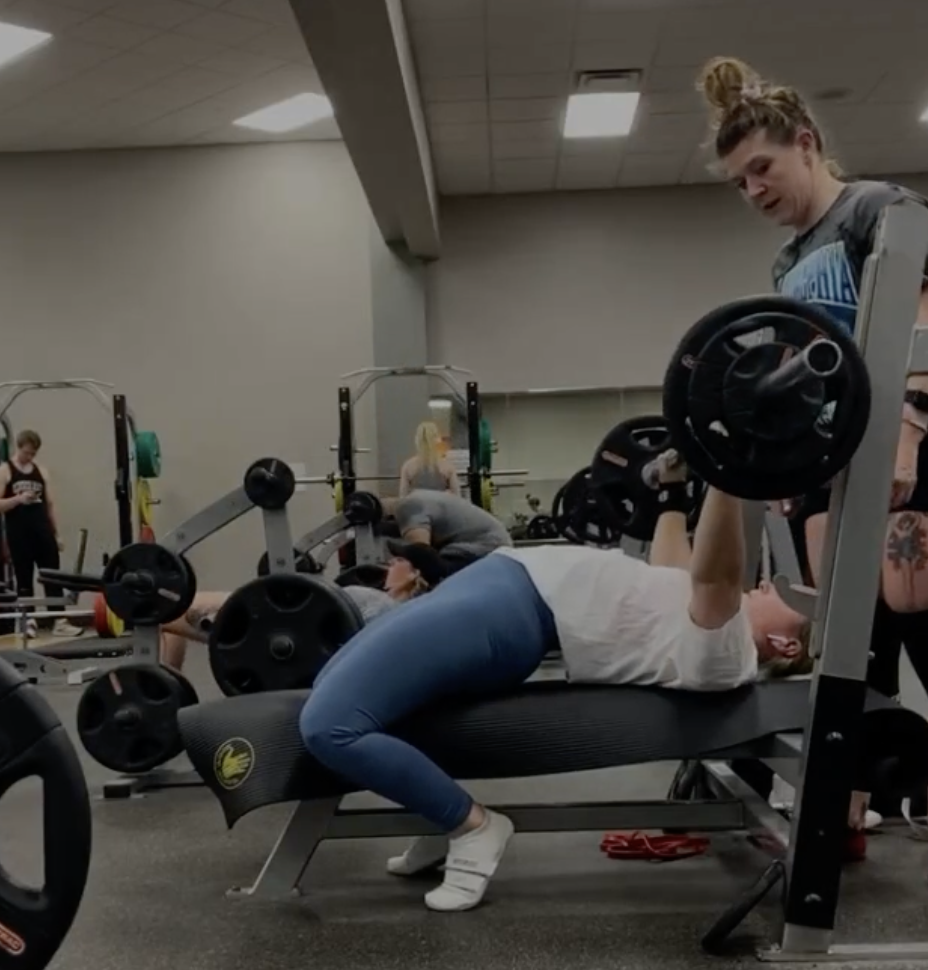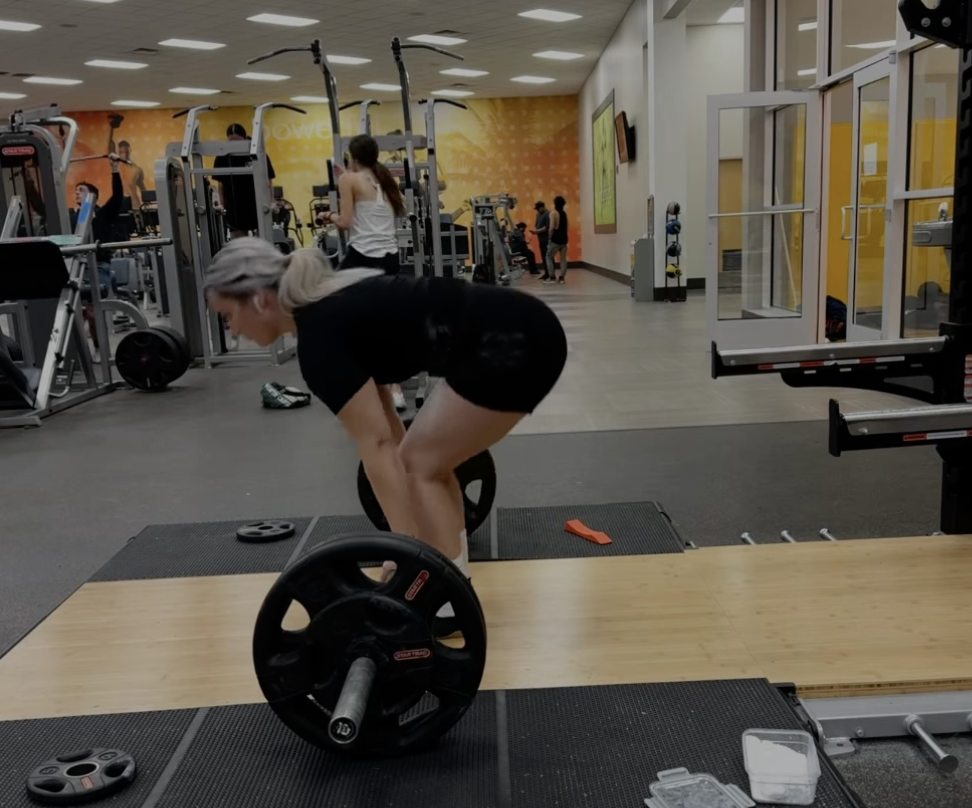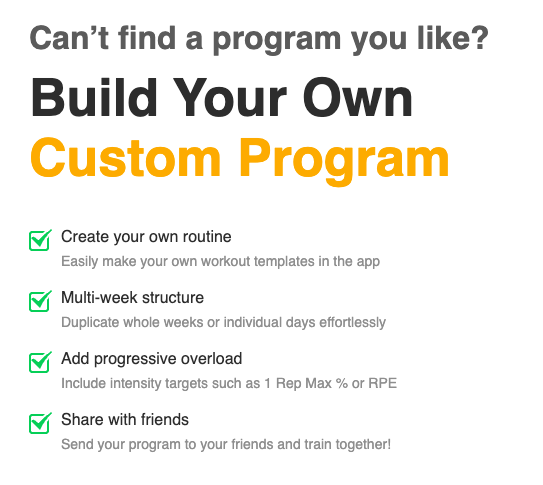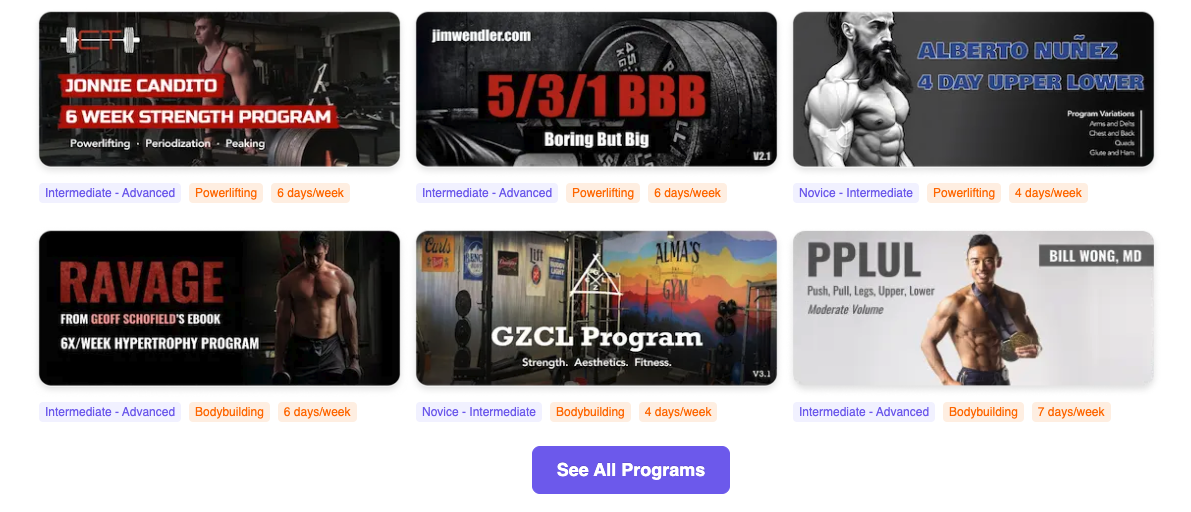Avoid These Mistakes: What To Avoid With A Lifting Plan
Written by the Boostcamp staff
What Not to Do When Starting a Lifting Program
Starting a weightlifting program can be an exciting step towards achieving your fitness goals. Whether you're looking to build strength, increase muscle mass, or improve overall fitness, resistance training can be an effective form of exercise. However, like any physical activity, it's important to approach weightlifting with caution and avoid common mistakes that can hinder your progress or even lead to injuries. Let’s discuss what not to do when starting a lifting program and provide valuable tips to help you get on the right track.
So, let's dive in and learn how to make the most of your weightlifting journey!
Understanding Weightlifting Program Basics

Before we delve into the common mistakes, let's first understand the basics of a weightlifting program. A weightlifting program is a structured plan designed to improve muscle strength, endurance, and overall fitness. The program typically includes specific exercises targeting various muscle groups. By consistently following a weightlifting program, you can expect to see visible improvements in muscle tone, size, and strength. With that said, let's explore some of the critical components of a weightlifting program, starting with defining what it entails.
Defining a Weightlifting Program
A weightlifting program, in its simplest form, is a structured plan for strength training that involves lifting weights or using resistance to progress in fitness. The program usually consists of exercises that are performed with free weights, such as dumbbells, barbells, or weight machines, though bodyweight exercises can also be incorporated. Each exercise is typically performed for a specific number of repetitions (reps) and sets, with rest periods in between. The goal of a weightlifting program is to progressively overload the muscles, challenging them to adapt and grow stronger over time by using heavier weights or increasing resistance. By targeting different muscle groups and gradually increasing the volume and intensity of the workouts, you can achieve significant gains in strength and muscle mass.
Purpose of a Weightlifting Program
A weightlifting program serves several purposes, all of which contribute to overall physical fitness. One of the primary goals of weightlifting is to increase muscle mass and strength. When you engage in weight training, your muscles undergo microscopic damage, which, when repaired, leads to muscle growth and improved strength. In addition to strength gains, weightlifting programs can also provide a form of physical activity that helps to burn calories and promote weight loss. The more muscle mass you have, the more calories you burn at rest, making weightlifting a valuable tool for managing weight.
Moreover, mastering the exercises in weightlifting programs enhance overall fitness by improving balance, stability, and posture. By incorporating weight training into your fitness routine, you can reap these benefits and achieve a well-rounded level of fitness.
Common Mistakes to Avoid When Starting a Lifting Program

Now that we've covered the basics of a weightlifting program, let's shift our focus to some common mistakes that beginners often make when starting their lifting journey. By being aware of these pitfalls, you can avoid setbacks and make progress more efficiently. So, let's take a look at some of the mistakes you should steer clear of.
Lack of a Clear Goal
When embarking on a weightlifting program, it's crucial to have a clear goal in mind. Whether your aim is to lose weight, build muscle mass, or improve overall fitness, defining your objective will provide direction and motivation. Without a clear goal, it can be challenging to stay consistent and measure your progress accurately. Set specific and achievable goals, and break them down into smaller milestones. For example, if your goal is weight loss, determine how much weight you want to lose and set a realistic time frame.
Having a clear goal and using a fitness tracking app will help you stay focused, track your progress, and make adjustments to your weightlifting routine as needed.
Ignoring Proper Technique
One of the most common mistakes beginners make is neglecting proper technique when starting a strength training routine. It's essential to learn and practice good form to maximize the effectiveness of your workouts and prevent injuries. Proper technique involves maintaining the correct starting position, using smooth lifts, and engaging the targeted muscle groups. When performing exercises, focus on the quality of your movements rather than the weight you're lifting. This will ensure that you're effectively targeting the muscles and reducing the risk of strain or injury.
Overdoing It: The Danger of Too Much Too Soon
It's natural to feel enthusiastic and motivated when starting a weightlifting program, but it's important to avoid overdoing it, especially in the first week or two. Pushing yourself too hard too soon can lead to muscle overload, inflammation, and unnecessary fatigue. Gradual progression is key to allow your body to adapt to the new demands of weightlifting. Start with lighter weights and gradually increase the resistance, number of reps, or duration of your workouts. This progressive overload stimulates muscle growth and strength gains while minimizing the risk of injury. Additionally, be mindful of the duration of your exercise sessions. Aim for around 45-60 minutes of weightlifting, excluding warm-up and cool-down time, to avoid overexertion and optimize your results.
The Role of Proper Nutrition in Weightlifting
In addition to a well-designed weightlifting program, proper nutrition plays a crucial role in supporting your fitness goals. Fueling your body with the right nutrients is essential for muscle repair, growth, and overall performance. A balanced diet that includes an adequate intake of calories, proteins, healthy fats, and carbohydrates will provide the necessary energy and building blocks for muscle development. It's important to plan your meals to ensure you're consuming enough calories to meet your body's requirements, especially if you're aiming for building as much muscle as possible.
The Importance of a Balanced Diet
Maintaining a balanced diet is crucial for supporting muscle growth, optimizing recovery, and sustaining energy levels during your weightlifting program. A balanced diet includes a variety of foods from different food groups, such as fruits, vegetables, whole grains, lean proteins, and healthy fats. Each of these food groups provides essential nutrients that contribute to overall health and muscle development. Protein, in particular, is vital for muscle repair and growth, so be sure to include sources of lean protein, such as chicken, fish, tofu, or legumes, in your meals. Additionally, carbohydrates provide energy for your workouts, while healthy fats support hormonal balance and joint health. By adopting a balanced diet, you'll provide your body with the necessary nutrients to fuel your weightlifting routine and optimize your results.
Hydration and Exercise: How Much is Enough?
Hydration is often overlooked but plays a vital role in exercise performance and overall health. When weightlifting, your body needs an adequate amount of water to function optimally. It's recommended to drink water before, during, and after your workouts to maintain optimal hydration levels. The amount of water needed varies depending on factors such as body weight, intensity of exercise, and environmental conditions. As a general guideline, aim for at least 8 cups (64 ounces) of water per day, and adjust your intake based on your activity level and individual needs. Staying properly hydrated helps regulate body temperature, supports cardiovascular health, facilitates nutrient transport, and aids in muscle function. Remember, listening to your body's thirst cues is also important, as they can indicate the need for additional hydration.
The Influence of Rest on Your Lifting Program
Rest and recovery play a fundamental role in any weightlifting program. While it may be tempting to push yourself to the limit every day, giving your body time to rest is essential for muscle growth and overall performance. During weightlifting sessions, tiny tears occur in your muscles, and rest allows these muscles to repair and grow stronger. Additionally, rest helps prevent overuse injuries, fatigue, and mental burnout. Aim to incorporate rest days into your lifting routine, allowing your muscles 24-48 hours of recovery time between workouts. Quality sleep, adequate nutrition, and stretching can also contribute to muscle recovery and overall well-being.
Why Rest is Crucial in a Lifting Program
Rest is a crucial component of a lifting program as it allows your muscles to recover and repair from the stress and damage caused by weightlifting. When you engage in weightlifting, small tears occur in your muscle fibers, and it is during the rest phase that these tears heal and muscles grow stronger. Without sufficient rest, your muscles don't have the time they need to repair, and this can result in overtraining, muscle fatigue, and lack of progress. Adequate rest allows your body to adapt and grow, maximizing the effectiveness of your lifting program. So, remember to prioritize rest days and give your muscles the time they need to recover for better results.
The Importance of a Well-Rounded Exercise Regimen

While weightlifting is an effective form of exercise for strength training, it's important to incorporate other elements into your fitness routine for a well-rounded approach. A balanced exercise regimen should include cardiovascular exercise, stretching, and mobility work in addition to your strength training. Cardiovascular activities, such as running, cycling, or swimming, improve heart health, endurance, and overall fitness. Stretching exercises help enhance flexibility, improve muscle recovery, and prevent muscle imbalances. And mobility exercises, such as yoga or targeted stretching routines, increase joint mobility, reduce the risk of injury, and enhance overall body functionality. By incorporating these components into your exercise routine, you'll promote overall fitness, reduce the risk of injuries, and enhance your lifting performance.
The Role of Cardio in a Lifting Program
Cardiovascular exercise is a valuable addition to a lifting program, contributing to overall fitness and well-being. While weightlifting primarily focuses on strength training, cardio activities, such as running, cycling, or swimming, offer numerous health benefits. Engaging in regular cardio sessions helps improve cardiovascular fitness, strengthens the heart, and lowers blood pressure. It also aids in weight management, as cardio exercises help burn calories and promote weight loss. Including cardio exercise in your lifting program can enhance endurance, improve recovery time between lifting sessions, and increase overall fitness levels. Aim for at least 150 minutes of moderate-intensity cardio exercise per week, spread across multiple sessions, to reap the maximum benefits of incorporating both weightlifting and minutes of exercise into your fitness routine.
Stretching: A Key Aspect Often Overlooked
Stretching is an often overlooked but critical component of any well-rounded lifting program. Incorporating stretching exercises into your routine offers numerous benefits, including improved flexibility, enhanced muscle recovery, and reduced post-workout soreness. Stretching exercises involve lengthening and elongating muscles, improving suppleness and range of motion. By stretching regularly, you can help prevent muscle imbalances, maintain good posture, and reduce the risk of injuries during lifting. Stretching also promotes relaxation, reduces muscle tension, and aids in overall stress relief.
Understanding the Risks Associated with Improper Lifting Techniques
Improper lifting techniques can pose serious risks to your safety and well-being. It's crucial to understand the potential hazards and take steps to lift weights safely. By performing exercises with incorrect form, you increase the likelihood of sustaining injuries, such as muscle strains, joint pain, or back injuries. Safe lifting involves using proper technique, maintaining good form, and engaging the appropriate muscles. It's essential to always prioritize safety when lifting weights, both to avoid acute injuries and to prevent long-term damage. Let's delve deeper into some common injuries resulting from incorrect lifting techniques and how to avoid them, especially if you haven't lifted in a long time.
Common Injuries from Incorrect Lifting
Incorrect lifting techniques can lead to a variety of common injuries, many of which are preventable with proper form and technique. Some of the most common injuries associated with lifting weights include:
Strained muscles from lifting with incorrect mechanics.
Back injuries, such as herniated discs, due to poor form and lifting with rounded back.
Joint pain and inflammation caused by lifting with improper technique or overloading joints.
Overuse injuries, such as tendonitis, resulting from repetitive improper movements.
Muscle tears and sprains, usually occurring when lifting weights beyond one's capacity.
By understanding these potential risks, you can take proactive measures to avoid them and lift weights safely and effectively.
How to Avoid Injuries When Lifting
To minimize the risk of injuries when lifting weights, it's essential to practice safe lifting techniques. Here are some tips to help you avoid common lifting injuries:
Always warm up before starting a lifting session to prepare your muscles for exercise.
Focus on maintaining proper posture and alignment throughout the lift.
Start with lighter weights to master correct form before gradually increasing the resistance.
Engage your core muscles to support your spine and prevent lower back injuries.
Listen to your body, and if you experience pain or discomfort during lifting, stop and reassess your form or consult a fitness professional.
By following these guidelines and prioritizing safe lifting practices, you can reduce the risk of injury and maximize the effectiveness of your strength training sessions.
Mentally Preparing for a Lifting Program
While physical preparation is crucial, it's equally important to be mentally prepared when starting a lifting program. Mental preparation involves cultivating the right mindset, establishing a mind-muscle connection, and ensuring emotional readiness. By setting realistic expectations, maintaining motivation, and staying focused, you can enhance your lifting experience and maximize your results.
The Mind-Muscle Connection: What is it and Why is it Important?
The mind-muscle connection refers to the ability to focus on the specific muscle being worked during an exercise. It involves directing your attention and mental energy to efficiently activate the targeted muscle group, maximizing its engagement and recruitment. By developing a strong mind-muscle connection, you can enhance muscle activation, increase strength gains, and promote better overall body control.
Focusing on the muscle you're working prevents relying solely on momentum or compensatory movements, leading to more effective and targeted lifts. Cultivating the mind-muscle connection requires concentration, body awareness, and practice. Incorporating mindfulness techniques, such as visualization or internal cues, can help strengthen this connection, amplifying the benefits of your lifting program.
Where to Find Lifting Programs

One of the most surefire ways of starting a lifting program correctly is finding a great one. A well written lifting program will help you incorporate things like progressive overload as well as deload weeks, track your progress, and overall hold you accountable for what you do in the gym.
Keep in mind that good programs will help with your fitness journey, so you want to find a program that caters to your needs and guides you in the right direction, making sure that you are making the most gains. If you are looking to stay on track and continue with linear progression, then finding a good workout program is the key. Where do you look for a good workout program? Check out the Boostcamp App for some great programs.
Boostcamp is home to over 50 FREE workout programs that consist of strength, hypertrophy, or functional fitness, or both, from the push pull legs program all the way to upper lower.
However, with Boostcamp, you don’t have to just follow a pre-written program, you also can create your own program as well, and track your progress to make sure you are on the right track. That being said, when you are looking to incorporate some arm training to further your powerlifting progress, then check out Boostcamp.
Conclusion
Starting a lifting program can be exhilarating, but ensuring you do it right is crucial for long-term success. Avoid common mistakes like lacking a clear goal, neglecting proper technique, or pushing yourself too hard too soon. Remember, balance is key. Nutrition, hydration, rest, and a well-rounded exercise regimen are all vital components. Don't overlook the importance of stretching, proper form, and the guidance of a personal trainer for optimal results and injury prevention. By incorporating these elements into your lifting program, you set yourself up for a safe, effective, and rewarding fitness journey.
Also, be sure to follow Boostcamp on Instagram and subscribe on YouTube!


